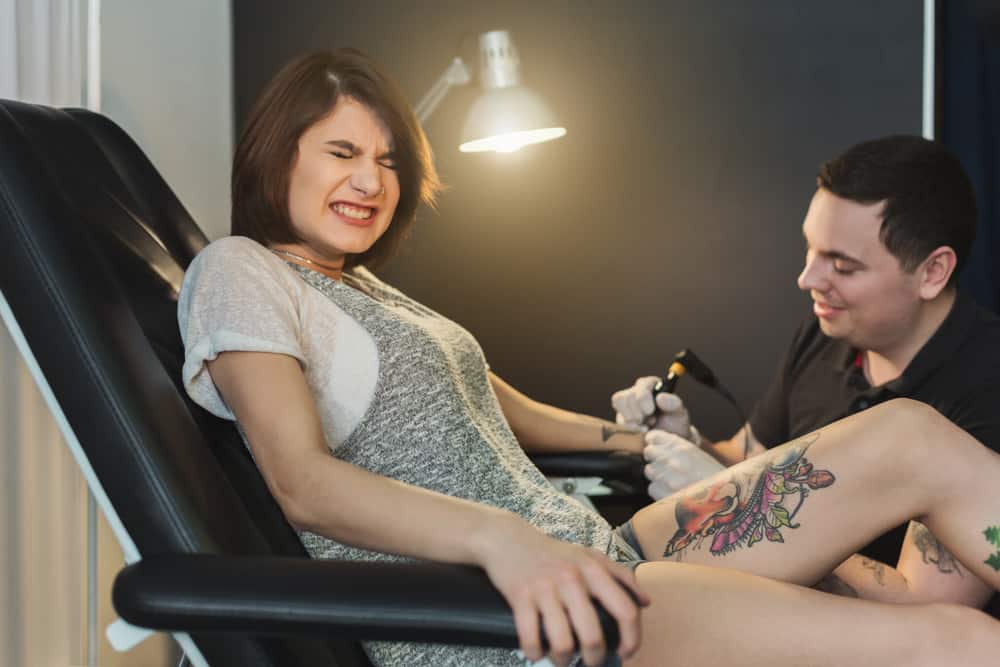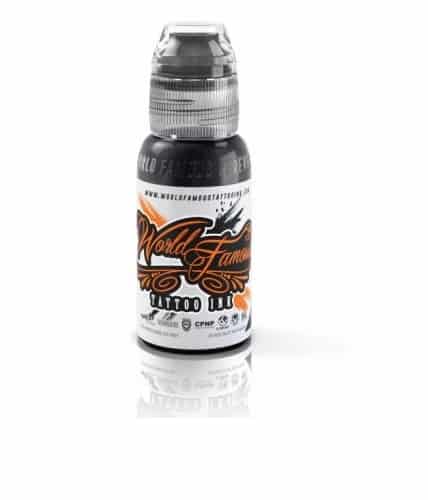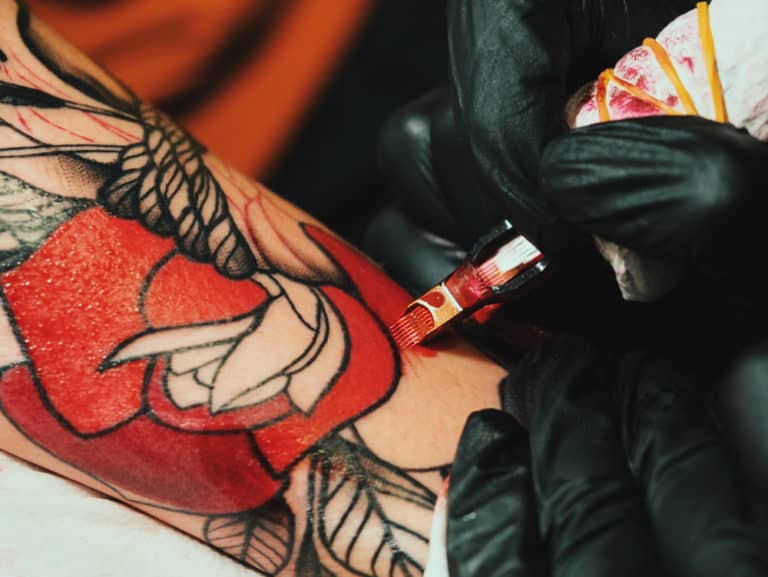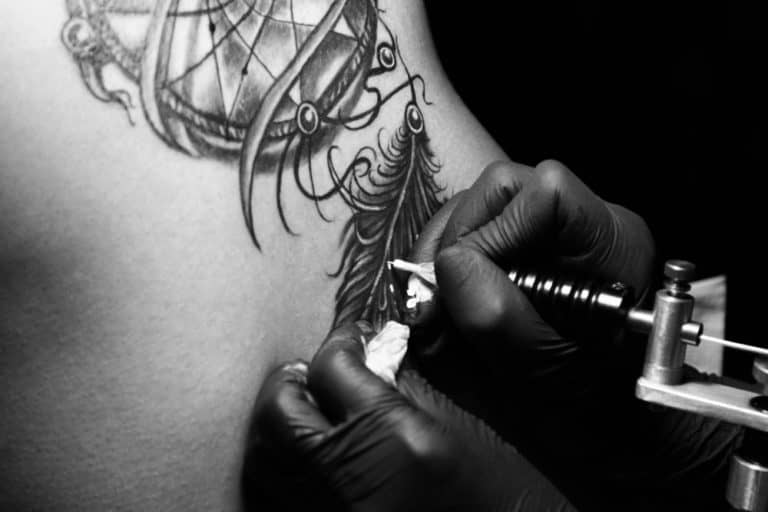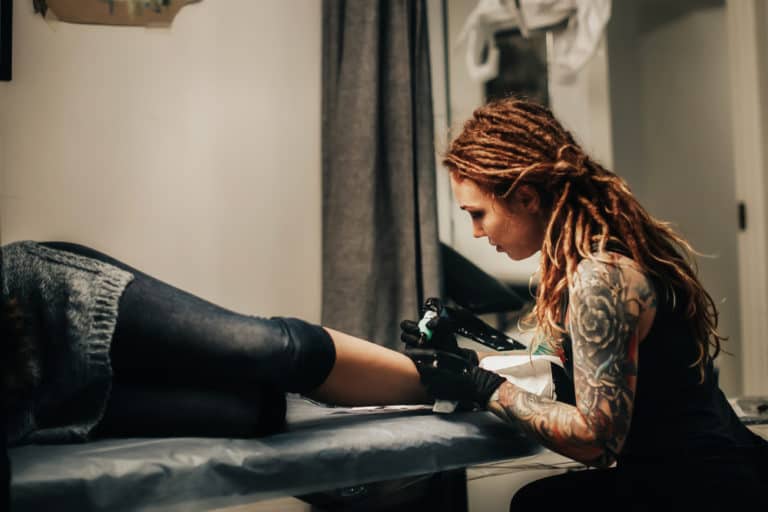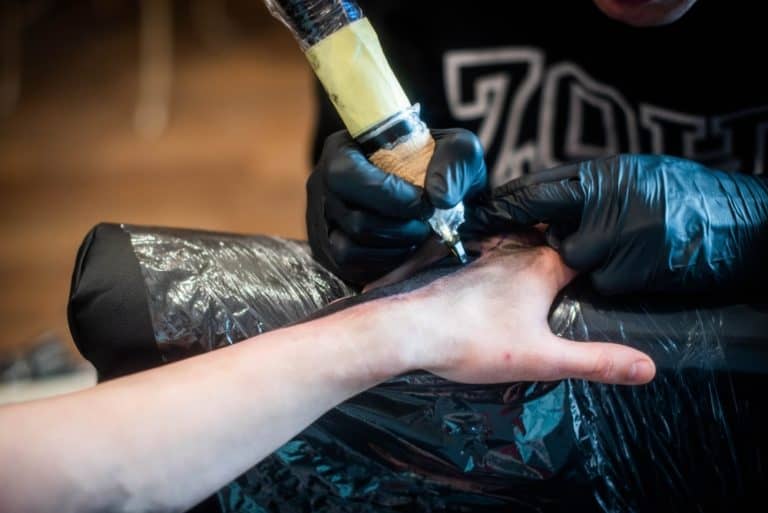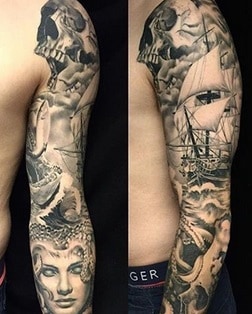Do Touch Up Tattoos Hurt More?
I remember the first tattoo I got, and the pain was intense. I had a rude awakening thinking it could not possibly be that bad. Every person reacts differently to pain, so imagine hearing you need a touch-up in a few weeks. If the first hurt, do touch-up tattoos hurt more?
Touch-up tattoos do not hurt more than the original tattoo. However, every person has a different tolerance level to pain. Touch-up tattoos are done several weeks after the initial tattoo is fully healed. The pain may be more intense on previously tattooed skin if the touch-up is done too soon.
Well, what a relief. The pain may or may not be the same or worse. I have been in sessions of four hours plus and fell asleep and other touch-up sessions where the tears were escaping voluntarily. There are a lot of factors that can cause touch-up tattoos to hurt more, so let’s find out more.
Do Touch Up Tattoos Hurt More Than A New Tattoo?
Getting a tattoo is a painful experience, regardless if it is your first or fiftieth tattoo. The same goes for tattoo touch-ups. Often, the touch-up can hurt more because the skin on that area was recently bruised. Even when fully healed, it will be more noticeable.
Areas of the body where a touch-up tattoo can hurt more are –
- Knees – kneecaps and behind the knee
- Collarbones
- Ankles
- Hands
- Inner thighs
- Stomach
- Neck
Which Factors May Influence Pain During A Tattoo Touch-Up?
When you first consult a tattoo artist, they will explain certain dos and don’ts that can influence the pain and healing of a tattoo.
Similarly, the same factors apply when you go for a tattoo touch-up. The following list should be discussed in your consultation –
- Your gender
- Your age
- Your weight
- Drinking alcohol
- Certain prescription drugs
- Recreational drugs
- Sun exposure
- Psychological state
- Shaving or waxing
- Menstrual cycle
Can You Reduce Touch-Up Tattoo Pain?
While you can do a few things to lessen the pain of a touch-up tattoo, it will not take the pain away entirely. Here are some tips –
- Ensure the touch-up area is completely healed before the next session
- Drink a lot of good quality water to stay hydrated
- Do not drink any medication besides what is prescribed
- You can drink paracetamol after but avoid aspirin as it thins the blood
- You can request that the tattoo artist apply a numbing cream such as Licodaine containing Emla
What Types Of Pain Can You Expect During A Tattoo Touch-Up?
Getting a touch-up on a tattoo is not always necessary, but sometimes an area may need more color, or the healing process may impact the linework. With that in mind, it’s always a good idea to consult your tattoo artist a few weeks later so they can assess it.
What The Pain Feels Like
Firstly the pain you will experience is unique to your makeup and pain threshold. The area of the tattoo placement and subsequent touch-up is a big factor. You will feel something, but let’s try and describe to you what to expect –
The General Burning Pain
Imagine being burnt by a hot but not searing object for a prolonged time. Burning pain is usually experienced when you have a lot of shading or coloring on a tattoo design. The skin may feel raw and open. Expect this type of pain to be more severe in the fleshy body areas. The intensity will depend on the person.
The Dull Pain
Personally, this is my favorite type of pain while getting inked. Most artists will agree that you can easily fall asleep once you experience this type of pain.
The beta-endorphins released by the pituitary gland assist the body in dealing with pain. It has an opioid effect, which helps you fall asleep. The dull pain can intensify at points, but it is bearable.
The Scraping Pain
Usually, scraping or scratching pain is experienced by everyone who receives a touch-up tattoo. The pain is similar to a nail scratching or scraping over the skin constantly. It can become intense, especially when doing lots of linework.
The Stinging Pain
Typically experienced when there is dot work or the tattoo artist uses a single needle for linework. It is similar to a wasp sting, constantly and painful. This will be a decider for getting their next tattoo or never again to many first-time tattoo clients.
The Buzzing Or Vibrating Pain
This type of pain can be the most annoying. Any bony area on the body will make you experience this type of pain. It’s similar to the drilling sensation you feel when a dentist drills a tooth.
Areas that may experience the buzzing pain are –
- Hands and fingers
- The ribcage or flank
- Both sides of the wrist
- Elbow
- The shin and ankles
- Chest and collar bones
The vibrating pain can become extremely annoying, and some clients may even find it ticklish, resulting in a pull-away reaction.
Where Will A Tattoo Touch-Up Hurt The Most?
Any area on the body may be painful when you need a tattoo touch-up, but some areas are particularly painful. The kind of pain that makes you rethink your choices. The bony areas are understandable, but the following body parts are the most painful –
- Inner thighs
- Shins
- Armpits
- Neck
- Face
- Underboob
- Nipples and breasts
- Kneecaps
- Behind the knee
- Groin
- Inner bicep
- Hips
Where Will A Tattoo Touch-Up Hurt The Least?
This is not to say it will not be painful, but slightly less than the body’s sensitive areas. Again, the pain is subjective to the mentioned factors. The less painful areas are –
- Calf
- Outer thigh and back of the leg
- Upper arms
- The fleshy areas of the back
- Forearms
When Should You Consider A Tattoo Touch-Up?
Once your tattoo is completely healed, you should book a follow-up consultation with the tattoo artist. Typically most tattoos are fully healed in 14 days, but it is safe to wait at least three weeks before returning.
The tattoo artist will inspect the tattoo and surrounding skin, and if any anomalies or flaws are identified, they will recommend a touch-up session. Usually, linework or some shaded areas may need a once-over.
Even the best tattoo artists may suggest a touch-up on some works. This is no reflection on their skill, but it is because each person’s skin is unique. If you have many breaks in a session, that may also cause it to hurt more than taking no breaks at all.
Conclusion
The fact that tattoo touch-ups will inevitably hurt should not deter you from getting it done when needed. The sooner you get the touch-up session, the faster the tattoo can heal and settle into the skin.
Some of my favorite designs, tattoo books, and aftercare products, selected for you
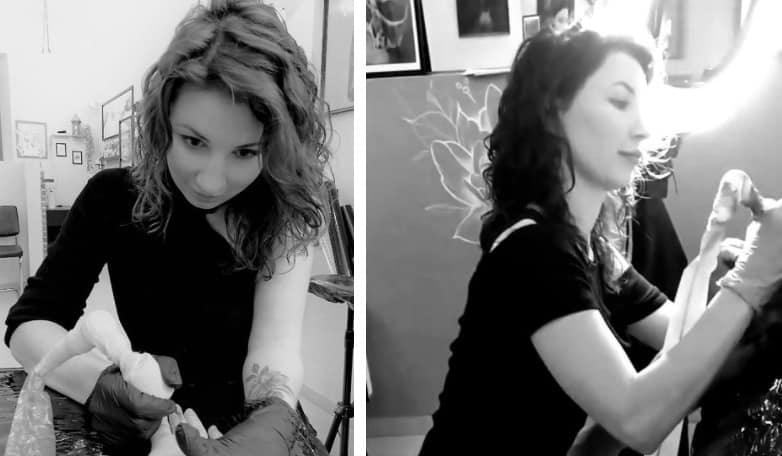
Thank you for reading my article, I hope that you have found it helpful. If you would have trouble finding ideas for your tattoo, wonder what is meaning of design that you have found or what to buy for aftercare, to make sure that your tattoo will be healing quickly and easily, here are some of my favorite products in one place, hope that this will also help.
Design and tattoo ideas
For some ideas you can have a look at those 3 books with hundreds of designs that I use with my clients, they are available on Amazon for Kindle or in classic, paper version (links below):
- Great Book of Tattoo Designs, Revised Edition: More than 500 Body Art Designs (Fox Chapel Publishing) Fantasy, Celtic, Floral, Wildlife, and Symbol Designs for the Skin by Lora Irish
- The Big Book of Small Tattoos – Vol.1: 400 small original tattoos for women and men by Roberto Gemori
- Tiny Tattoos: Over 1,000 Small Inspirational Artworks by Rebecca Vincent.
Tattoo meaning
If you would like to read more about the meaning of different tattoo styles and designs before you will decide what you would like to have, I can recommend a book that was really useful for me when I was starting my tattoo adventure – it’s “Conscious Ink: The Hidden Meaning of Tattoos” by Lisa Barretta (through the link you can find it on Amazon for around $10).
Tattoo aftercare
The skin at the tattoo site often dries out. To prevent it and speed up healing for my clients, I usually recommend one of those tattoo aftercare balms (you can find them on Amazon):

